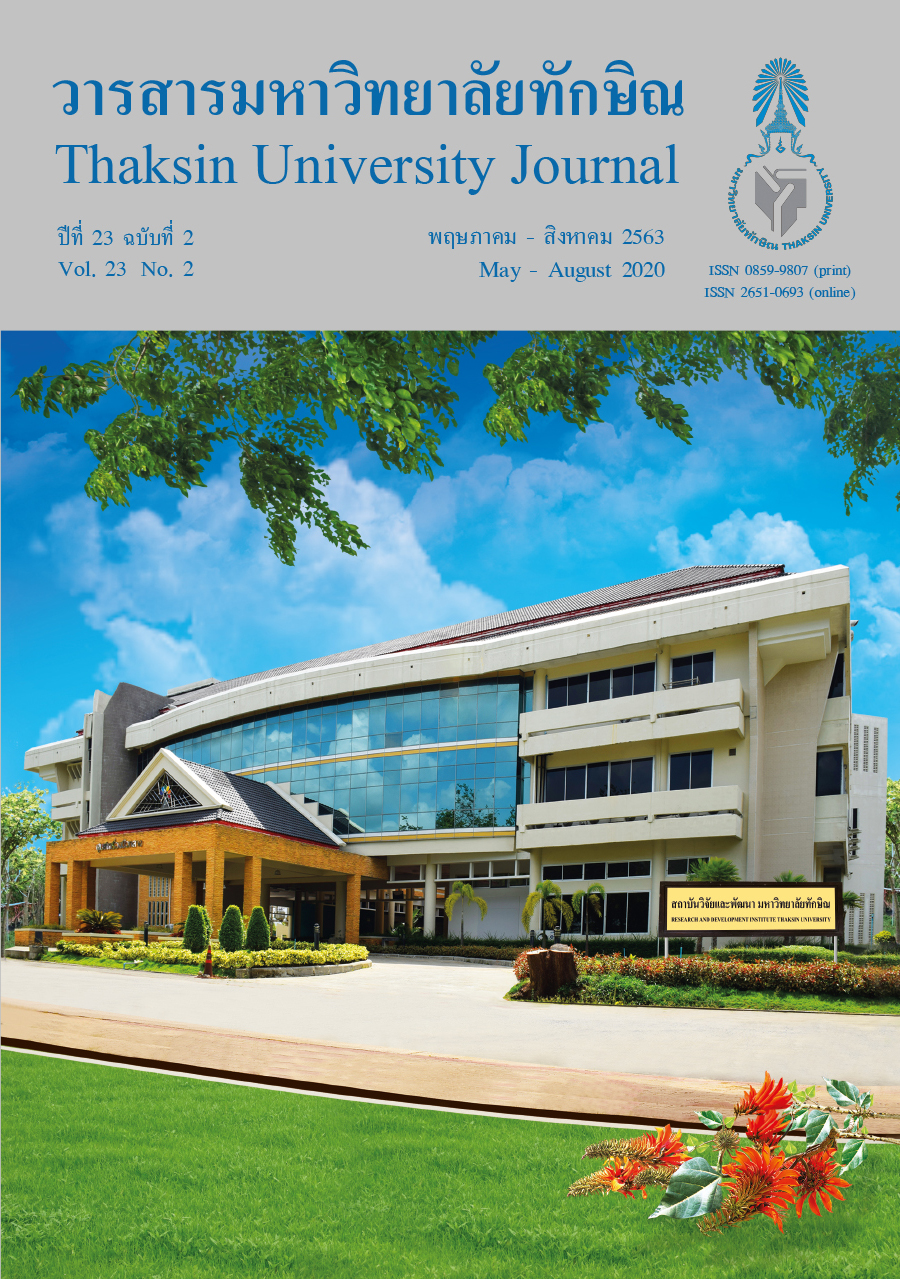The Use of 3D Terrestrial Laser Scanner for Monitoring Rill Erosion
Main Article Content
Abstract
This research aimed at using 3D Terrestrial Laser Scanner to investigate and monitor the morphological changes of rills in and estimate the volume of soil losses from large rills. In this study, the researchers selected six rills on hillslopes with slope gradient ranging between 30-60 % under oil palm and rubber plantations in Tha Sae District, Chumphon Province. Terrestrial Laser Scanner was used to collect 3D morphological characteristics of rills, covering the area of 2 x 5 m2 for each rill. Rills development was monitored between July - December 2018 of which eight data sets in total were obtained per rill. Digital elevation model (DEM) was generated for each observation with 1-cm resolution. Results showed that soil loss from rills under rubber plantation was greater than that under para-rubber plantation. The amounts of soil eroded from the rills under para-rubber plantation were 1,234 (Rubber A), 1,508 (Rubber B) and 1,290 (Rubber C) cm3 over the study period. The amounts of soil loss of 1,244 (Palm A) and 1,203 (Palm B) cm3 of soils were removed from two rills under oil palm plantation, in which one rill gained 0.63 (Palm C) cm3 of removed soil. The rills with the highest Stream Power Index (SPI) under both plantations had the highest net soil loss. The net soil loss was positively correlated with raining day (r = 0.69) in all rills, except the largest rill under oil palm plantation, in which the net soil loss had a positive correlation with maximum rainfall intensity (r = 0.98).
Article Details

This work is licensed under a Creative Commons Attribution-NonCommercial-NoDerivatives 4.0 International License.
References
Vagen, T. G., & Winowiecki, L. A. (2019). Predicting the spatial distribution and severity of soil erosion in the global tropics using Satellite Remote Sensing. Remote Sensing, 11(15), 1800. DOI.org/10.3390/rs11151800.
Chen, T., Niu, R.Q., Li, P.X., Zhang, L.P., & Du, B. (2011). Regional soil erosion risk mapping using RUSLE, GIS, and remote sensing: a case study in Miyun Watershed, North China. Environmental Earth Sciences, 63(3), 533–541.
Rengers, F.K., & Tucker, G.E. (2015). The evolution of gully headcut morphology: a case study using terrestrial laser scanning and hydrological monitoring. Earth Surface Processes and Landforms, 40(10), 1304-1317.
Kou, P., Xu, Q., Yunus, A.P., Ju, Y., Guo, C., Wang, C., & Zhao, K. (2020). Multi-temporal UAV data for assessing rapid rill erosion in typical gully heads on the largest tableland of The Loess Plateau, China. Bulletin of Engineering Geology and the Environment, 79(4), 1861–1877.
Goodwin, N.R., Armston, J.D., Muir, J., & Stiller, I. (2017). Monitoring gully change: A comparison of airborne and terrestrial laser scanning using a case study from Aratula, Queensland. Geomorphology, 282, 195–208.
Gudino-Elizondo, N., Biggs, T.W., Castillo, C., Bingner, R.L., Langendoen, E.J., Taniguchi, K.T. Kretzschmar, T., Yuan Y., & Liden, D. (2018). Measuring ephemeral gully erosion rates and topographical thresholds in an urban watershed using unmanned aerial systems and structure from motion photogrammetric techniques. Land Degradation & Development, 29(6), 1896–1905.
Eltner, A., & Baumgart, P. (2015). Accuracy constraints of terrestrial Lidar data for soil erosion measurement: Application to a Mediterranean field plot. Geomorphology, 245, 243–254.
Karsidag, G., & Alkan, R.M. (2012). Analysis of the accuracy of terrestrial laser scanning measurements. in The FIG Working Week 2012. 1–16. May 6–10, 2012, Rome Cavalieri Hotel. Rome: Italy.
Milan, D.J., Heritage, G.L., & Hetherington, D. (2007). Application of a 3D laser scanner in the assessment of erosion and deposition volumes and channel change in a proglacial river. Earth Surface Processes and Landforms, 32(11), 1657–1674.
Kruptawanich, N. (2015). A study of scanning geometry factors affecting the accuracy of Terrestrial Laser Scanner. Master’s Degree Thesis. Chulalongkorn University.
Perroy, R.L., Bookhagen, B., Asner, G.P., & Chadwick, O.A. (2010). Comparison of gully erosion estimates using airborne and ground-based LiDAR on Santa Cruz Island, California. Geomorphology, 118(3–4), 288–300.
Southern Region Irrigation Hydrology Center. (2018). Rainfall data (Online). Retrieved 10 April 2562, from http://hydro-8.com.
Jourdan, C., Michaux-Ferriere, N., & Perbal, G. (2000). Root system architecture and gravitropism in the oil Palm. Annals of Botany, 85(6), 861–868.


